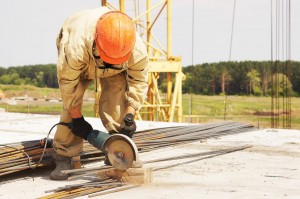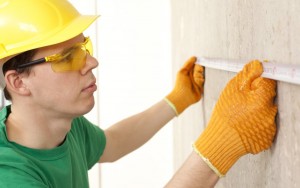There are plenty of hazardous jobs out there, ranging from cutting materials and grinding them, producing dust in the process, to welding which produces toxic fumes, mixing chemicals and various other types of work during construction and other jobs that produce and use toxic substances. The side effects of working with such chemicals or in such conditions will often include a number of symptoms such as shortness of breath, burning sensations, dizziness, and in the worst case scenarios even unconsciousness and death. Keeping yourself safe when working in such conditions is a serious business, so you will need to ensure you know what you’re doing, lest you end up sick or worse.
• Ensure your equipment fits you, as there are different sizes available and you need to make sure yours is the right one, especially when you work with chemicals. There is a good reason why it’s a bad idea to have beards, sideburns, stubble or even moustaches, as they will be a problem when you’re using a respirator of any kind. You need to ensure you’ve tested the fit to verify the seal before entering a hazardous environment. Eye glasses may also affect the fit, so you may want to have corrective lenses on your eyes instead so they won’t get in the way. Cold temperatures will create valve sticking, fogging, and stiff rubber on masks and so on.
• Choosing the right respirator is up to you, as there are different ones used for different types of hazards. You need to make sure you use the right kind for the right situation. You need to ask yourself if any other ways of countering the hazard will work out first. Make sure you’re fully aware of what it is and how you can deal with it. You need to know that an unknown composition of the atmosphere you’re about to breathe can be extremely dangerous, flammable or even deadly. You can use disposable masks for dust such as sawdust and so on, but they will not work well with concrete dust and finer particles. They will work well when you need to do cleaning for construction, or maybe even simple house cleaning, carpet cleaning, upholstery cleaning and so on if you’re allergic to dust. You need to make sure you always use a full gas mask for hazardous chemicals that may also act as eye irritants or worse. Always, absolutely always make sure you have a tight seal and you’ll do just fine.
• Air purification devices are fairly common in the construction world, but they do possess their own limitations as well. They do not protect against oxygen deficient atmospheres, since they will require the resupply of air, they also cannot be used for entry into dangerous atmospheres such as those of hydrogen sulfide. You also cannot use them with substances with poor warning properties, such as those extremely dangerous, no odor, no eye irritation or respiratory irritation substances such as hydrogen sulfide and carbon monoxide, which are fairly hard to detect by ordinary means. Be aware of what you’re dealing with as much as possible and use the right filters for the right situation.
More tips find on this website











